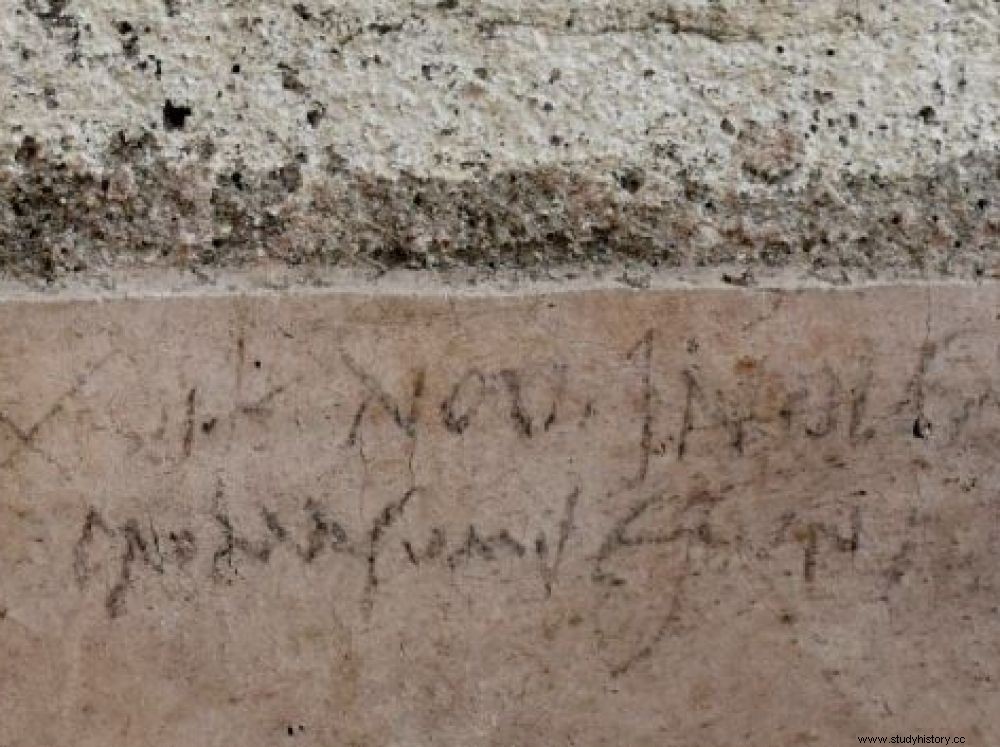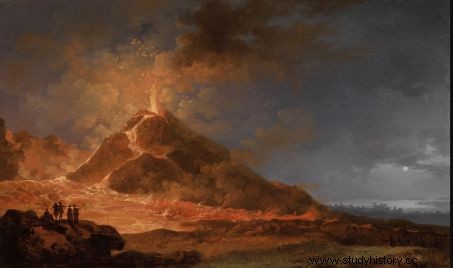An inscription, recently discovered in a house exhumed in the new area of Pompeii excavations, confirms that the destruction of the ancient city would not have taken place in August, but two months later, on October 24, 79.

An inscription found on a wall in Pompeii puts back the date of the eruption of Vesuvius.
It is a small charcoal inscription. Two lines scribbled on a wall, as the people of Pompeii used to do. And this "exceptional discovery ", in the words of Alberto Bonisoli, Italian Minister of Culture, should put an end to the discussions on the true date of the eruption of Vesuvius. Historians have indeed long thought that the Neapolitan volcano destroyed the cities Roman ruins of Pompeii, Stabiae or Herculaneum on August 24, 79. However, this graffiti unearthed in the new excavation sector of the ancient city (Regio V) makes it possible to establish that the disaster would have taken place two months later.
Probably scribbled by a worker renovating a house, the inscription mentions " in[d]ulsit pro masumis esurit[ioni] " which can be translated by a humorous "He got drunk". But the author of these lines took care to date them:""XVI K Nov" or " XVI (ante) K(alendas) Nov(embers) » which means precisely "the sixteenth day before the calends of November", i.e. the October 17. Which rules out an eruption in summer! In fact, there has long been speculation about the actual date of the eruption, which was questioned by archaeologists after the discovery of autumn fruits and braziers in the ruins. Today, everyone agrees to fix the date of the terrible eruption on October 24, 79.

The Eruption of Vesuvius, by the painter Pierre-Jacques Volaire (1729-1799). © Karlsruhe, Staatliche
A lot of evidence in previous excavations
Already, in December 2011, in the pages of the magazine Sciences et Avenir , we returned to these questions. Alix Barbet, honorary director of research at the CNRS, a great specialist in Roman painting, pointed out that several copies of the letter from Pliny the Younger (the nephew of Pliny the Elder who died in Stabies while trying to help the victims of Vesuvius), mentioned in a correspondence to Tacitus "the ninth day before the calends of November" , not… September! On the other hand, archaeological excavations carried out by Grete Stefani and Michele Borgongino had shown that the hemp intended for the seeds had already been harvested, and that the harvest was over at the time of the eruption. But the irrefutable proof had come from the discovery of a coin:a coin found in the house of the Golden Bracelet, in Pompeii, and which referred to the 15 th Imperial acclamation for the victories of Emperor Titus (39-81) in Britain. "However, this title did not yet exist in August 79" , had then specified the eminent specialist who continued:"We must correct our works and rehabilitate Dion Cassius, the historian of the 2nd century of our era, who with good reason, always located the eruption after the 15 e acclamation of Titus!" .
Where then does the original error come from? If the letter written by Pliny the Younger, 20 years after the eruption, clearly mentions "the ninth day before the calends of November ", it is not excluded that in medieval times, a somewhat dazed copyist monk was mistaken... and that his error was replicated for centuries.
